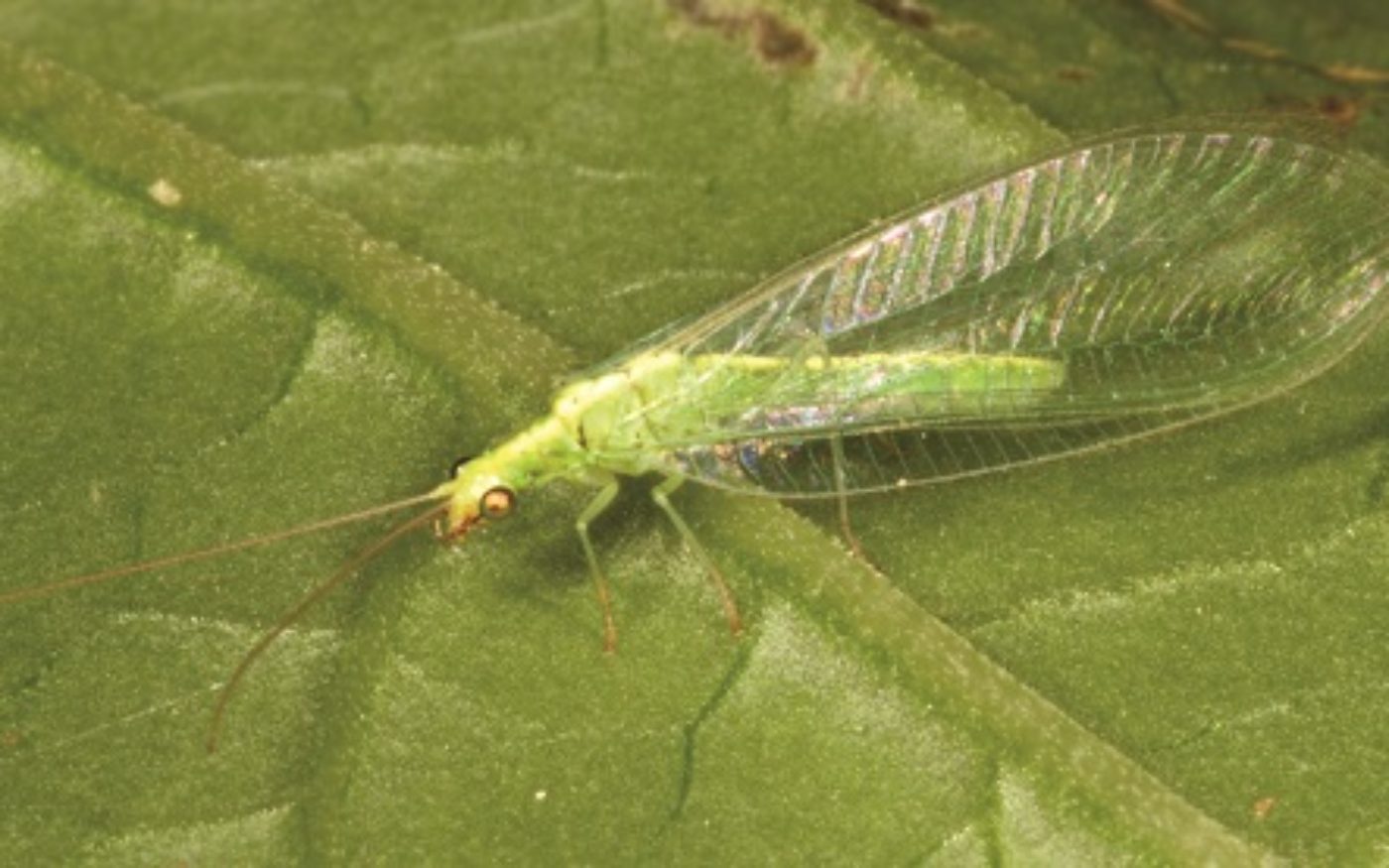Order
Lacewings, antlions and mantidflies
The Common Green Lacewing (Chrysoperla carnea) is one of 18 species of green lacewings that live in Britain. Two of these species are actually brownish but all the others are various shades of green. All have long antennae, large golden eyes and two pairs of transparent wings that are held tent-like over the body when at rest. The wings are iridescent when they catch the light and are crossed with a tracery of fine veins giving the wings their lace-like appearance.
What do they look like?
The Common Green Lacewing is about 10 mm long. It is pale lime green during the summer, with a lemon-yellow stripe down the middle of the body. The head lacks the black spots of some species but the cheeks are reddish. The most distinctive feature of the Common Green Lacewing is that it over-winters as an adult insect: it enters buildings to hibernate and turns yellowish-brown, often with red spots on the abdomen.
Where do they live?
The Common Green Lacewing lives amongst tall grasses, herbaceous plants, trees and bushes. It is commonly seen in gardens, fields and hedges, and at the edge of woodland.
Where can they be found?
The species is common and widespread throughout Britain.
When can you see them?
Adults are present almost all year round, though they hibernate in buildings during winter months. The period of peak activity is from May to September.
Life cycle
Eggs are laid in late spring and early summer by adults that have over-wintered from the previous autumn. They are white, cigar-shaped and are attached to leaves by a long filament at one end. They take a few weeks to complete development and then pupate inside a round silken cocoon attached to the underside of a leaf. The adults of this generation are on the wing in mid-summer and immediately lay eggs so that a second life-cycle is completed before the autumn, and the emerging adults prepare for hibernation.
What do they do?
The larvae are predatory and they actively hunt aphids, scale-insects, caterpillars and insect eggs on foliage. The adults, however, are not predators, but feed on nectar, pollen and honeydew.
Did you know?
Before mating, the adults court each other by vibrating their abdomens to produce ultra-low frequency songs that are carried through the leaves on which they are standing.

